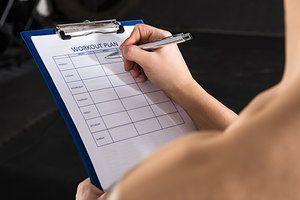On Oct. 21, 2025, a judge in Florida issued a groundbreaking decision in Complete Care v State Farm, 25-CA-1063. It concerns a fact pattern that many chiropractic doctors have faced wherein an insurer, such as State Farm or Allstate, decides to simply stop paying all claims submitted by a healthcare provider.
| Digital ExclusiveDosing Exercise: 3 Elements
An extensive body of literature supports exercise prescription as a key nonpharmacological treatment for many pain conditions.1-3 To comply with guidelines and adhere to best practices in physical medicine, management plans must include active care elements as part of their multimodal approaches. That said, there is a need to ensure doctors are developing prescriptions which are appropriate for their patients. Plans should be progressively challenging, individualized, focused on goals and measurable.
Doctors can hone their exercise strategies through a number of certifications and advanced training options (coursework for the rehab diplomate, for example). Powerlifting, kettlebell work, bodyweight routines and banded exercises can all be used to meet patient needs. Learning different techniques and philosophies can help build comprehensive rehabilitation approaches. And while the nuanced benefits of building a repertoire of exercises shouldn't be understated, a minimum competency of all active care should be its measurability.

The typical doc might have default programming. "Three sets of ten, 1-2 times per day" is a common volume and frequency for home care. But this approach misses personalization and omits one of the most commonly lacking elements of prescription. What's more, the purported purpose of the exercise likely fails to meet expectations.
Different programming exists for strength training, endurance training, mobility training and even movement patterning. (Cardio training and others could be considered, but are much less common in a chiropractic office.) The purpose of training should not only dictate the types of exercises, but also the quantified variables as described below.
Element #1: Volume
One purpose of exercise is to develop increased and improved muscular response to load. Physiologically speaking, this is accomplished first by increasing the number of nerves innervating and recruiting muscle fibers; and second by the volume and contractility of the muscle fibers themselves.
To increase muscular response, graded exposure to progressive loads is needed for ongoing improvement. To track progress, measuring exercise volume is commonly accomplished by looking at how much weight is moved in a given session (recorded as sets x repetition x load).
So, how much weight do we use, or what sets and reps will make for meaningful strength training? If a person can handle the higher load, the sets and repetition don't need to be as large to accommodate growth.
However, in most of our offices, patients will be receiving exercise prescriptions as part of a rehabilitation program. It may be dangerous to maximally load the tissue, so in these conditions the focus will be on higher reps in each set to stimulate fatigue conditions which trigger a loading stimulus (requisite to building muscle). The higher rep schema also works for patterning movements and some types of mobility work.
Element #2: Frequency
Frequency refers to the number of times exercises should be performed usually in a given day, week, or month (for example: twice a day / three times a week). The important thing about frequency is to allow the body and/or muscle groups adequate time to rest. Beyond that, the frequency of exercises will need to be associated with the purpose of those activities.
Strength and endurance training will cause more load-induced response to the tissue. As such, there will need to be more time between training events. The goal in mobility training is to re-establish end-ranges of tissue. Exercises performed at a higher frequency, multiple times a day, will consistently produce the desired outcomes.
When training a movement pattern, the focus will be on form and intent. Frequency can be established based on a patient's competency during assessment or evaluation. Every repetition needs to be a quality one.
Element #3: Intensity
Intensity (percent rep max, relative perceived exertion, etc.) is probably the most commonly missed metric in exercise prescriptions. While well-intentioned, simply asking patients how they feel during an exercise won't be adequate to track training outcomes. A commonly used scale, the Borg scale, rates perceived exertion on a 15 point scale (6-20). It is relative to each individual's fitness level, from "no feeling of exertion (6)" to "very hard activities not likely sustainable (20)."
Tracking intensity is key, as it serves as a baseline from which volume and frequency can be progressed. Consider a patient who reports "these [exercises] are getting easier." Hearing this feedback may prompt the prescribing doctor to increase the load, frequency or progress the exercise outright. But by what standard is the exercise "easier"? And will the new prescription be equivalent to the last dosage? Maintaining an intensity level can ensure the amount of effort is consistent and track improvements in a meaningful way.
An alternative to measuring intensity with the Borg scale is to use heart rate. A quick conversion (multiplying the Borg scale by 10) will yield a heart rate approximation. This is convenient, as heart rate will increase directly related to the effort of an activity and can be used as another option to monitor intensity.
Heart rate can easily be used as part of home care prescriptions since many people now wear devices (think FitBit or Apple watches) that can track it. Thus, patients can independently progress their training in other variables between visits.
Clinical Pearls
The lack of tracking and quantifying outcomes continues to be an issue with documentation. As exercise is more commonly used in patient management, it's necessary to monitor their progression over the course of care. Establishing volume, frequency and intensity on day one, and subsequently showing increases in training elements, demonstrates to patients their ability to adapt and become resilient to loads. This additionally helps train a patient's mindset to encourage positive outcomes from a psychosocial perspective.
The benefits of exercise are numerous. Quantifying office training experiences and home exercise prescriptions enhances both documentation and functional outcomes.
References
- Ambrose KR, Golightly YM. Physical exercise as non-pharmacological treatment of chronic pain: why and when. Best practice & research. Clin Rheumatol, 2015;29(1):120-130.
- Malfliet A, et al. Best evidence rehabilitation for chronic pain part 3: low back pain. J Clin Med, 2019;8(7):1063.
- Oliveira CB, et al. Clinical practice guidelines for the management of non-specific low back pain in primary care: an updated overview. Euro Spine J, 2018;27(11):2791-2803.



